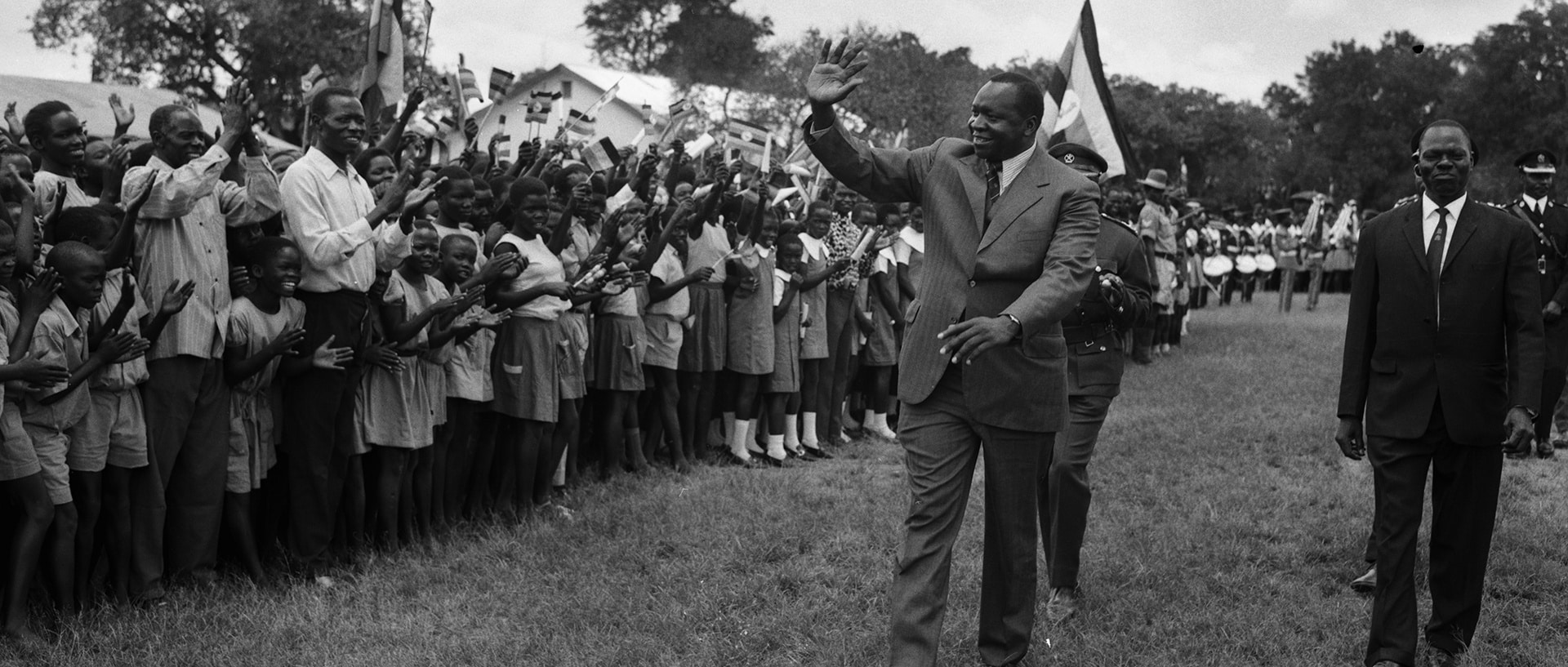
“His Excellency the President for Life, Marshal Alhadji Doctor Idi Amin Dada, holder of the Victoria Cross, DSO, holder of the Military cross and Conqueror of the British Empire”: that is how he insisted on being addressed by anyone he encountered. Better known by the short name of Amin Dada, the man ruled Uganda for eight years, from 1971 to 1979. The renowned film director Barbet Schroeder even made a 1974 documentary entitled General Idi Amin Dada: Self-portrait about the man he considered to be one of the most bloodthirsty and megalomaniac dictators in Africa.
The black and white images featured in the book The Unseen Archive of Idi Amin: Photographs from the Uganda Broadcasting Corporation by historian Derek R. Peterson and anthropologist Richard Vokes were all taken by anonymous photographers. The country’s ministry of information had hired a team of photographers who followed the dictator everywhere, photographing him before and after his public appearances. “A dangerous job. One of these photographers – Jimmy Parma – had been executed by Amin’s men,” write Peterson and Vokes in their introduction, where they provide information on the background of his archives, on the media in Uganda and, in particular, on the link between photography and power.


These negatives (over 70,000) were collected in the archives of the Uganda Broadcasting Corporation (UBC), a national television and radio station. In January 2018, the station decided to digitize them in partnership with several international universities. These photographs were intended to show citizens the activities of their government, its achievements, and above all to stamp Amin’s mark on history. In their presentation of these images, Peterson and Vokes focused on several different themes, each of which is introduced by a text that allows for the selected scenes and sequences to be contextualized, enabling the reader to step back from the regime’s propaganda machine. Without that critical approach, one might believe they are looking at a fair and wonderful world, for the photographs themselves are quite beautiful. We follow Amin Dada over the years, from his ascension to power to his speeches before large crowds to family portraits.
The book also takes an interest in the daily life of Ugandans during this time period, and features cultural events as well as other scenes that the regime orchestrated, such as public executions. Photographs of just one such event were recovered (although the authors of the book confirm that there were many more), the execution of a certain Sergeant Baru. In the dozen or so photographs of the execution in the book, Baru is seen with his body covered with a bloodied white sheet, tied to a tree trunk – images that will send shivers up the reader’s back. Baru was accused of killing an Airkenya pilot during an argument at a bar. Justice was therefore served and the Amin Dada regime immortalized these moments thanks to the presence of photographers.


It’s fascinating to go through this book and to see images of the public jubilation and optimism that initially accompanied Amin Dada’s takeover, before gradually discovering the horrors of his regime. Peterson and Vokes embarked on an audacious but successful challenge in allowing us to understand how the dictator used photography to improve his image. The authors also pay tribute to all those anonymous photographers who, whether they were aware or not of participating in deception on a wide scale, left behind evidence that today enables us to look back on history and thus try not to repeat the same mistakes.
By Sabyl Ghoussoub
Born in Paris in 1988 into a Lebanese family, Sabyl Ghoussoub is a writer, columnist and curator. His second novel, Beyrouth entre parenthèses [Beirut in Parentheses] was released by Antilope editions in August 2020.
The Unseen Archive of Idi Amin, photographs from the Uganda Broadcasting Corporation. Photographs from the Uganda Broadcasting Corporation. By Derek R. $50.





